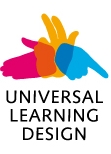According to the last “People with Disabilities Report” (cro. Izvješće o osobama s invaliditetom) in Republic of Croatia lives 529 103 persons with disability which is more than 10 % of total population. There is 18 317 persons with impaired vision (blind and visually impaired). Compared to previous years this number has increased by 2044 people. According to estimates 10 %, with a tendency to increase, of blind people is using the Internet. Estimates are based on documents and reports that are currently derived from the project “Communication Rod to Independence” (cro. Komunikacijskom štapom do neovisnosti).
-
Using of Internet and new technologies geared towards enhancing the quality of life for visually impaired has led to the development of accessibility of everything that surrounds visually impaired person. Development of accessibility has been analyzed in terms of website development, i.e. development of e-Learning system for visually impaired according to existing standards and with newly developed standards.
When planning, designing and developing e-Learning system for visually impaired these criteria must be met:
-
Planned according to existing standards, i.e. WCAG 2.0 and BS 8878: 2010
-
Usability criteria have to be met
-
Universal design
-
Support for assistive technologies (screen readers, specially designed key• boards, scanning applications and others)
Accessible and usable web is part of e-accessibility concept, one of key elements of e-inclusion. E-inclusion seeks to ensure inclusion of all people in the Information Society. In that context, e-accessibility defines removal of technical barriers and difficulties that visually impaired person could come across.
W3C standards define the provision of access and use of website content for visually impaired. Understanding of information, movement an interaction between website and user defines website usable for all users which are currently using the website. Accessible website strives to ensure all users, regardless of disability or experience, equal access to the information.
Usability criteria include basic requirements in the website design such as:
-
Exact element positions on the website
-
Simple design
-
Ability to change font size
-
Ability to change background color
-
Accurate image description
-
Appropriate language support
-
Video recordings need to have voice and text
-
Website frames need to have assigned names
-
Forms have to be standard
-
Text should not be in form of an image
-
If visual verification is used (CAPTCHA) there should be audible verification available
Universal design term represent that a product or service must be accessible to all people regardless of whether they have some degree of disability. Principles of universal design is defined in seven points:
-
Impartial use
-
Usage flexibility
-
Simple and intuitive use
-
Perceptible information
-
Error tolerant
-
Low physical effort
-
Size and space for approach and use
System needs to have support for assistive technologies such as screen readers and specially designed keyboards and so on. Assistive technologies enable visually impaired person efficient usage of the system.
This paper will discuss described definitions and standards that will be implemented in learning management system (LMS) as a module for visually impaired. LMS developed at the Faculty of Transport and Traffic Sciences has been in use since 2004. System is composed of five modules: Document Management System (DMS), The Authorization and Supervision System (cro. Sustav Autorizacije i Nadzora; SAN), students module e-Student, SMS module SMSCentar and mobile learning module FPZMobile.
This paper will define guidelines, according to WCAG 2.0 standards, for development of the LMS module for visually impaired. These guidelines will be recommended for their implementation of the Strategy for e-Learning at the University of Zagreb (cro. Strategija e-Učenja Sveučilišta u Zagrebu).









